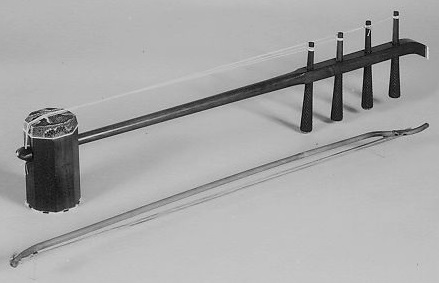Khuuchir on:
[Wikipedia]
[Google]
[Amazon]

 The khuuchir is a bowed musical instrument of Mongolia.
The khuuchir is a bowed musical instrument of Mongolia.Хуучир mongol.undesten.mn
The mongolian Khuuchir (also Huuchir) is considered the predecessor of chinese instruments like the more popular of the ''hu'kin'' or Huqin instruments, the "
ОДНОО /khuuchir/ - MELODY
Mongolian musical instruments

 The khuuchir is a bowed musical instrument of Mongolia.
The khuuchir is a bowed musical instrument of Mongolia.The mongolian Khuuchir (also Huuchir) is considered the predecessor of chinese instruments like the more popular of the ''hu'kin'' or Huqin instruments, the "
erhu
The (; ) is a Chinese two-stringed bowed musical instrument, more specifically a spike fiddle, that is sometimes known in the Western world as the ''Chinese violin'' or a ''Chinese two-stringed fiddle''. It is used as a solo instrument as ...
", —''er'' meaning ''two'' in chinese, referring to the two strings of the instrument, and Hu meaning ''foreign'', or barbarian.
The Khuuchir —the Mongolian name used today actually derives from the Chinese name Huqin— like its relative the Erhu, could be traced back to more than a thousand years, being introduced to china in the Tang Dynasty
The Tang dynasty (, ; zh, c=唐朝), or the Tang Empire, was an Dynasties of China, imperial dynasty of China that ruled from 618 to 907, with an Wu Zhou, interregnum between 690 and 705. It was preceded by the Sui dynasty and followed ...
(A.D.618-907) probably during the military campaigns against the steppe nomads.
The Khuuchir, or Erhu is also believed to have evolved from the ''xiqin'' instrument, from ancient nomadic Hu-people (also named Five barbarians
The Five Barbarians, or Wu Hu (), is a Chinese historical exonym for five ancient non- Han ''" Hu"'' peoples who immigrated to northern China in the Eastern Han dynasty, and then overthrew the Western Jin dynasty and established their own king ...
) such as the Xí tribe, or other similar proto-mongol steppe nomadic peoples.
Thus, the chinese name Huqin refers to a "string instrument of the Hu people", showing that the instrument may have come from regions of the Mongolian Plateau, to the north, west or northeastern areas of today's China.
A double-stringed version also exists, the " ''si'khuu or sihu''", with ''si'' (meaning four) replacing ''er'' (two).
See also
*Music of Mongolia
Music is an integral part of culture of Mongolia, Mongolian culture. Among the unique contributions of Mongolia to the world's musical culture are the long songs, overtone singing, and morin khuur, the horse-headed fiddle. The music of Mongolia ...
*Music of Central Asia
The musical traditions of Central Asia mirror the immense diversity found in the cultures and populations residing in the region. Principal instrument types are two- or three-stringed lutes, the necks either fretted or fretless; fiddles made of ...
References
{{ReflistExternal links
ОДНОО /khuuchir/ - MELODY
Mongolian musical instruments